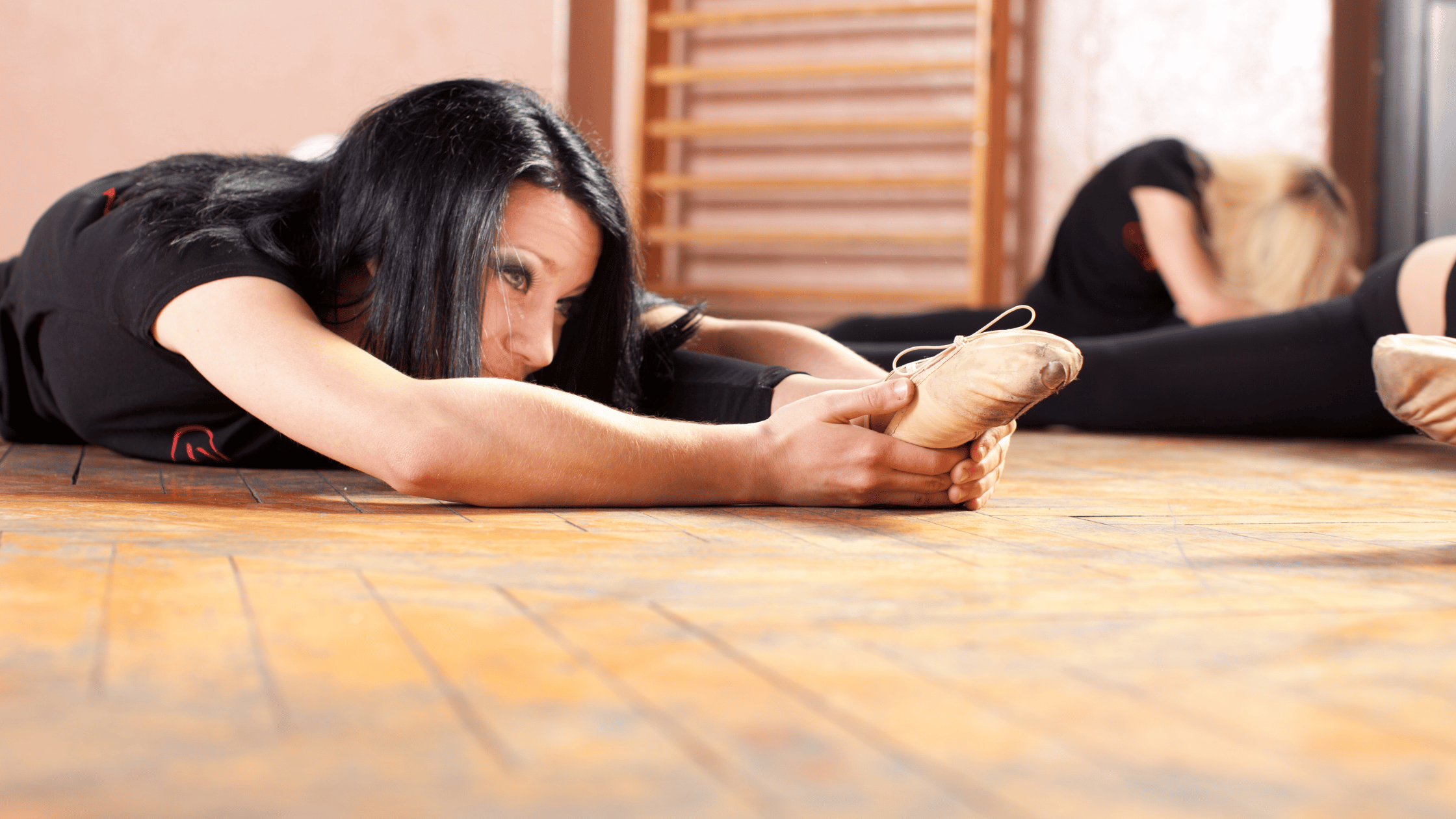Stretching for Dancers: Enhance Your Performance and Reduce Injury

Licensed Physical Therapist, PT, DPT // EW Motion Therapy Trussville
Dancing is not just an art; it's a highly physical activity that demands strength, flexibility, and endurance. Whether you are a ballet dancer, a hip-hop enthusiast, or a contemporary performer, stretching should be an integral part of your routine. We love helping our dancers at EW Motion Therapy incorporate stretches in their routine, and we tailor specific stretches for their type of dance and their goals. You may decide that our services don’t fit your needs, but you can still read this guide as we explore the best stretches for dancers, emphasizing why stretching is crucial and how it can vary based on the dancer's level and dance style.
Why is stretching important for dancers?
Building flexibility and strength
Stretching is vital for dancers to improve flexibility, an essential component of dance. Flexibility not only allows for a greater range of movement but also helps in executing dance moves more fluidly and gracefully. Regular stretching can enhance muscle strength, as it lengthens the muscles and increases blood flow and nutrients to the tissues, aiding in recovery and growth.
Preventing injuries
Another crucial reason stretching should be a staple in every dancer's routine is injury prevention. Tight muscles are more prone to strains and sprains. By incorporating stretching into your daily practice, you can increase muscle control and reduce the risk of dance-related injuries. This preventative measure ensures that you can continue dancing pain-free and reach your full potential.
Essential stretches for every dancer
Hamstring stretch
The hamstring stretch is crucial for dancers, as tight hamstrings can limit leg movements and contribute to lower back pain. Sit on the floor with one leg extended and the other bent, reaching forward towards the toes of the extended leg. Hold for 20-30 seconds, then switch legs. This stretch improves flexibility in the back of the legs and allows for higher kicks and deeper pliés.

Hip flexor stretch
The hip flexor stretch is vital for dancers to maintain hip flexibility, essential for leaps, splits, and floor work. Kneel on one knee, with the other foot in front, and push your hips forward, keeping your back straight. Hold the stretch for 20-30 seconds, then switch sides. This stretch aids in preventing hip and lower back strain.

Calf stretch
Calf muscles are heavily utilized in dance, particularly in styles that involve a lot of jumping. Stand facing a wall, with one foot behind the other. Keeping the back heel on the ground, lean forward until you feel a stretch in the back leg's calf. Hold for 20-30 seconds and switch legs. Regular calf stretching can help prevent Achilles tendonitis and improve ankle mobility.

Upper back stretch
Dancers require a strong and flexible back for many movements and lifts. Clasp your hands in front of you and round your upper back, pushing your arms forward while tucking your head. Hold for 20-30 seconds to relieve tension in the upper back and shoulders.

Side stretch
Side stretches are important for lateral flexibility, essential for movements involving side extensions and bends. Stand with your feet together, raise one arm overhead and lean to the opposite side, keeping your hips facing forward. Hold for 20-30 seconds, then switch sides. This stretch helps elongate the side muscles, improving overall body line.

Frequency and timing of stretching
The best time for intensive stretching is after a thorough warm-up or at the end of a dance session when the muscles are warm and pliable. Incorporating light dynamic stretches during the warm-up can also prepare the body for the demands of dance.
For optimal results, dancers should stretch daily, integrating it into their regular training routine. Even on rest days, a gentle stretching session can aid in muscle recovery and flexibility maintenance.
While regular stretching is essential, it's also important to listen to your body and avoid overstretching, which can lead to injuries. Focus on gentle, consistent stretching and avoid sharp pain or discomfort.
Tailoring stretches
Certain stretching techniques can benefit all dancers. However, the approach and intensity of stretches can vary based on individual needs and goals.
Beginner dancers
If you're new to dancing, your primary focus should be on building a solid stretching routine that covers all major muscle groups. Start with basic stretches like hamstring stretches, calf stretches, and arm stretches. Hold each stretch for at least 20 to 30 seconds without bouncing, to allow your muscles to relax and lengthen safely.
For beginner dancers, it's also crucial to understand the importance of warming up before stretching. A gentle warm-up, such as walking or light jogging, can prepare your muscles and prevent injury during more intensive stretching.
Intermediate to advanced dancers
As you progress in your dance journey, your stretching routine should become more specialized. Intermediate and advanced dancers often require higher flexibility and strength levels, so incorporating dynamic stretches (stretching through movement) and PNF (proprioceptive neuromuscular facilitation) stretching can be beneficial. These types of stretches can improve elastic flexibility and active muscle strength, crucial for complex and demanding dance movements.
Dance styles
Each dance style has unique requirements that dictate which muscle groups need the most attention. Here's how stretches can differ based on the type of dance:
Ballet
Ballet requires extreme flexibility and strength, particularly in the legs, feet, and spine. Stretches like splits, toe touches, and backbends are crucial for developing the necessary flexibility for ballet techniques. Additionally, focusing on Achilles tendon stretches can help in preventing common ballet injuries.
Contemporary and modern dance
These dance forms often involve fluid movements and a wide range of motion. Contemporary dancers should focus on full-body stretches, emphasizing spinal flexibility and hip openness. Movements like deep lunges, torso twists, and leg swings can enhance the fluidity and expression required in contemporary styles.
Hip-hop and street dance
Hip-hop involves explosive movements, isolation, and lower body strength. Dancers should concentrate on hip flexor, quad, and shoulder stretches to maintain agility and prevent muscle stiffness. Incorporating dynamic stretches into the warm-up can also prepare the body for the vigorous movements typical of hip-hop.
Integrating stretching into your dance routine
Incorporating these essential stretches into your daily routine can vastly improve your dance performance and flexibility and reduce the risk of injury. By understanding the significance of stretching and tailoring your routine to your dance style and level, you can enhance your performance and enjoy a long and healthy dance journey. Remember, stretching should be done consistently and with attention to form and breath. By dedicating time to proper stretching, dancers can ensure their bodies are prepared and protected, allowing them to focus on what truly matters – expressing themselves through the beautiful art of dance.
Stretching should always be performed with attention and care. Listen to your body, and never force a stretch beyond your comfort level. As you grow in your dance practice, your flexibility and strength will naturally improve, allowing you to reach new heights in your performance. Physical therapy can be an excellent resource for any dancer to improve performance - we consider it a privilege to help our dancers at EW Motion Therapy do this every day. If you’re curious about what else physical therapy can do for your dance career, click the button below to download our answers to 20 frequently asked questions.


